Description
Introduction to the trial book
The present book is Franz Kafka’s novel “Trial” along with its critique and interpretation, as well as the critique of his other two novels, “Palace” and “Lost”.
The trial novel is about Joseph Ka, a high-ranking bank employee who is arrested on the morning of his 30th birthday. Confused, he tries to find out why he was arrested.
In the novel Qasr, the main protagonist is Mr. Ka, who on a cold winter night arrives at the village behind Lordi Palace and goes to a guest house near a wooden bridge to spend the night;
But a man named Schwarzer wants to kick him out of the guest house. He claims that no one is allowed to stay there without the permission of the lord, because the guest house and the whole village in general belong to the palace and are part of the palace territory.
The Lost Novel is about the story of a poor teenager named Carl Official who is sent to the United States by his parents for seducing and conceiving a maid. On the cruise ship, Carl encounters a man named Jacob, who claims to be his uncle. He, a wealthy and powerful man, offers Carl to live in his house. Carl accepts the offer and steps into the aristocratic world.
You can read part of the author’s introduction to this work:
“Trial” is one of Franz Kafka’s three unfinished novels, along with “The Palace” and “The Lost.” Kafka began writing the novel “Trial” a month after breaking off his engagement to Felice Bauer in August 1914.
By the end of October of that year, in less than two months, he would have completed approximately 200 pages, or two-thirds of the novel. After a two-month hiatus, he resumed writing the novel in January 1915 and wrote about a hundred more pages.
Kafka was not completely satisfied with his novel at the time and was no longer working on it, leaving some chapters unfinished. “He published a short story in the ninth chapter of the novel, quoted by the prison priest, entitled ‘Before the Law’ separately in 1915.”
Trial book
“I’m constantly trying to say something inexplicable, something unexplainable, talking about something I have in the bones, something that can only be experienced in the bones.
Maybe this is basically the same fear that was sometimes talked about, but the fear that has spread to everything, the fear of the biggest and the smallest, the fear, the intense fear of saying a word.
“Of course, perhaps this fear is not just fear. Desire is something beyond anything that causes fear.” A novel that still has a lot to say years after its publication.
About the novel Trial by Franz Kafka
The Trial is one of three novels by the famous German author Franz Kafka, written between 1914 and 1915. The trial, like most of Kafka’s works, is not over, but there is a chapter in which the story finally ends.
Critics say this cannot be attributed to Kafka’s inability to write endings for his stories. In particular, there is evidence that Kafka wrote the opening and closing chapters of the trial before the other sections.
The novel The Trial, Kafka’s most famous work, was first published in 1925, one year after his death. The novel The Trial was first translated into English in 1937, and in 1999 it was selected by the French newspaper Le Monde as one of the top 100 novels of the twentieth century. In writing The Trial, Kafka was heavily influenced by The Crime and Punishment and The Karamazov Brothers by the great nineteenth-century Russian writer Fyodor Dostoevsky.
Synopsis of the trial
On the morning of the 30th birthday of Joseph Ka, the bank cashier, the heads of two unknown men from an unknown organization are suddenly found in his apartment. The two men, who did not give any specific explanation, only told him that he was in custody and could not leave the apartment and that the trial was ongoing.
They also tell Joseph about his clothes and belongings and ask him not to take them to the warehouse. Some time later, Joseph is called for a trial at an address called the court, which is actually an attic, where everyone seems to know Joseph Ka …
Trial novel critique; What is going on in Kafka’s head?
The trial novel has attracted a lot of critics. During the years since the publication of this book, many reviews have been written about it and it has been studied from different points of view.
From a political and sociological point of view, critics have criticized the book as a critique of the autonomous and inhumane bureaucracy of governments and the lack of adequate civil rights for human beings. Has been.
The trial is also examined from a psychoanalytic perspective. Those who have interpreted the novel from this point of view believe that the court in Kafka’s novel symbolizes a kind of foreknowledge and inner process that takes place in every human being.
According to Kafka’s friends, they have seen him laugh out loud several times as he reads the trial. Kafka’s biographer Rainer Stach also notes: “The trial is unpleasant overall, but it has humorous details.”
Trial film; Recreating Kafka’s work
Kafka’s trial has also attracted many filmmakers. Based on this book, two films have been made in the history of cinema. American director and writer Orson Welles first wrote a screenplay based on the novel in 1962, in which he played the role of Albert Hestler, a lawyer. Orson Welles called it the best film he has ever made.
In 1993, another film based on the trial of the same name was made on the BBC. The film is directed by David Jones and written by Harold Pinter. Famous American actor “Kyle McLachlen” has played the role of Joseph K. in this film.
About Kafka; The man who wanted his works to be burned
Franz Kafka was born in 1883 in Prague, Austria-Hungary. The Kafka family was Jewish and German-speaking. Kafka had a very authoritarian father and could never establish a good relationship with him. The shadow of this hatred has spread throughout the life of Franz Kafka.
Kafka’s education was in law, which gave him the opportunity to take German literature and art classes at the university. He received his doctorate in law in 1906 and for some time was a clerk in the court.
The university also made good friends with Kafka, the most important of whom was Max Broud, to whom Kafka later gave him all of his manuscripts and works. Although Kafka asked Broud to burn the manuscripts, he arranged and published them. World literature owes Max a go for this.
Franz Kafka has worked in the insurance industry for some time and is also the inventor of the helmet. He has also received honors for this medal. Kafka did not have a very successful emotional and personal life. Throughout his life, he did not experience very good mental conditions and suffered from stress and anxiety.
Franz Kafka died of tuberculosis in 1924 at the age of 41 and was buried in the Prague Jewish Cemetery.
Take a look at Kafka’s works
The trial novels “Palace” and “America,” known as “The Man Who Disappeared,” are Kafka’s long novels, neither of which has been completed. Metamorphosis is another important book by Franz Kafka that has been welcomed by audiences around the world.
A report on Deutsche Welle on Max’s Safe Deposit Boxes, which also contains documents and writings from Kafka, has been discussed.
“The Israeli newspaper Haaretz has devoted several articles to these documents since 2008, claiming that there are articles that will revolutionize world literature,” the report said in part. “Kafka scholars consider this claim to be exaggerated, and some accuse the newspaper of causing controversy.”
Trial manuscript; A challenge between Germany and Israel
Max Brod immigrated to Israel in 1939. He also brought Kafka’s manuscripts into his possession. According to Deutsche Welle, the manuscripts were given to his secretary after his death, and he won an auction in London years later.
The German Literature Archive bought the trial manuscript for nearly $ 2 million. The original text of the novel is kept in the German Museum of Modern Literature.
The National Library of Israel has repeatedly requested that the work be returned to Israel, but the Germans have resisted.
Translation of the trial novel into Persian
Kafka’s works are very popular among Iranian translators. Many translators have repeatedly translated Kafka’s novels into Persian in Iran. The novel Trial is also one of the novels that several translations of it are available in the Iranian book market.
Hossein Qoli Javaherchi translated Kafka’s trial into Persian for the first time in 1974. At that time, Farrokhi Publications published this book. “Amir Jalaluddin Alam”, the famous translator, also translated this novel into Persian in 1970 for Niloufar Publishing. Ali Asghar Haddad has also translated this novel into Persian for Mahi Publishing.
Other translations of this book available in the Iranian book market include the translations of “Manouchehr Bigdeli Khamseh” published by Negarestan Ketab and “Mohammad Ramezani” published by Aso Publishing. Sara Rahimi also translated the book for Dandelion Saba.
Sadegh Hedayat, a famous Iranian writer, has also translated the ninth chapter of the book Trial. This translation was published many years ago under the name “Law”.
We read in sentences from the trial book
There was a noise like the breaking of porcelain from the foyer, and everyone listened intently. کا. “I’m going to see what happened,” he said, and walked out slowly, as if giving others a chance to stop him.
As soon as he entered the foyer and tried to find his way in the dark, a small hand, much smaller than Ka’s, landed on the hand still holding the handle and slowly closed the door. The nurse was waiting for him.
“Nothing,” he said in a low voice, “I just hit a plate on the wall to pull you out.” کا. “I was thinking of you, too,” he said embarrassed. “What better,” said the nurse. After a few steps, they reached a door of frosted glass. The nurse is ahead of Ka. Opened the door. “Come on,” he said. There was a lawyer’s office.
In the moonlight, which illuminated only small squares of the floor in front of three large windows, it was evident that there were heavy, old tables and chairs in the room. “From this side,” said the nurse, pointing to the dark chests with inlaid backs.
The Trial is one of Franz Kafka’s most prominent novels. A book that best illustrates the world of the author – or what is commonly referred to as the Kafkaesque world.
In describing his works, Kafka constantly speaks of the description and image of an inner precipice, and in both newspaper notes and letters he considers his property to be a force that is concentrated in the depths of his being in the form of literature. In this book we see both the power of literature and the precipice that Kafka intended. The novel was published in 1925.
Franz Kafka was born on July 3, 1883, in Prague to a Jewish family. He received his doctorate in law in 1906 and worked for about 15 years in an insurance company.
Although Kafka did not marry, he was engaged three times, twice to Felice Bauer and once to Yuli Veritsk. He traveled to various cities and witnessed the First World War. Among Kafka’s most famous works are three unfinished novels, The Trial, The Palace, and America. Kafka finally died of tuberculosis on June 3, 1924 in a sanatorium in Vienna.
Kafka was deprived of pleasures such as love, family life, and personal independence throughout his life. At the age of thirty, he still lived in his father’s house and was dependent on his parents.
But his life had a different dimension: an inner dimension. Ali Asghar Haddad writes in this regard: “Kafka’s inner life flowed in a seemingly disconnected depth from everyday life. “A force emanating from within compelled him to create a unique literature with indescribable effort, with a disregard for camaraderie, with acceptance of physical suffering, a unique literature whose style and context are unimaginable.”
On the back cover of the novel Trial is an excerpt from Franz Kafka’s letter to Milena:
I am constantly trying to say something, to explain something inexplicable, to say something that I have in the bones, something that can only be experienced in the bones. Maybe this is basically the same fear that was sometimes talked about, but the widespread fear of everything is the fear of the biggest and the smallest, the fear, the intense fear of saying a word. Of course, maybe this fear is not just fear, maybe it is something beyond what causes fear.
We suggest that you read these two books, The Letter to the Father and The Conversation with Kafka, to better understand the writings and world of Franz Kafka, as well as to get to know his own life. You can also read the introduction of Kafka’s America’s book in Cafebook.
Trial novel
Max Brod – Kafka’s close friend who published his writings – says that Kafka’s view of the trial novel is incomplete. But if a reader is unaware of this and reads the book, not only will he not have a problem with the story, but he will probably not notice that the book is incomplete. In this sense, it is more coherent between Franz Kafka’s three novels.
The story of the trial book is as follows: “Joseph Ka.” He is a senior bank advisor and on the eve of his 30th birthday, he is strangely arrested in his room one morning. He can not guess whether this is a joke of his colleagues to surprise him or whether it really broke the law. After all, he lives in a law-abiding country, where there is peace and quiet, and no one can be arrested.
The opening sentences of the book say it all:
Undoubtedly someone to Joseph Ka. He was slandered because he was arrested one morning without making a mistake. Immediately knocked on the door and the man who ka. He had not seen her in this apartment until that day, he entered.
The man was slender and at the same time strong and strong. He was dressed in a tight black suit, something like a passenger suit, with lots of folds and pockets, buckles and buttons and a belt, so that it looked very practical, without knowing exactly where. کا. “Who are you?” He asked. (The Trial Novel by Franz Kafka – Page 13)
. He still does not believe anything, but the more he talks to the men in black, the more he realizes that it is not a joke and that he is really in custody. First to Ka. They are not even allowed to leave his room or have anyone come to see him. Finally, he is told to wait for the trial.
The fall of Joseph Ka. starts. His mind is involved in thousands of different questions and it seems impossible to get rid of it.
What happened at all? Why was he arrested? For what crime? Why don’t the people who took him show evidence of themselves and ignore his own evidence? The people who took him to his room look like idiots and bear no resemblance to an officer.
Some time later, as we become more familiar with the situation, we find out that the arrest of Joseph Ka. It is also unusual. He is told not to forget that he is still in detention, but this does not mean that he does not show up for work or distances himself from his normal life.
The situation goes like this and a little later Uncle Ka. Enters the story to help her. Together they go to a lawyer who is one of his uncle’s friends. It can be said that this lawyer deals the final blow. The lawyer takes himself very seriously, but while handling their case, he has only one thing to say: Ka. It is better to surrender to fate!
But Joseph Ka. He does not do that, he did not do that from the beginning and…
In the book’s afterword, Max Broad writes of the trial novel: “I received the manuscript of the trial novel in June 1920 and edited it at the same time. The manuscript has no title. But Kafka always referred to it in conversations as trial.
It is arranged by him, as well as the titles of the chapters, although I had to rely on my own feelings about the sequence of the chapters. “But because my friend read a large part of the novel to me, I was able to use my memory to sort the papers.”
The present book has ten chapters, and at the end of the book, there are unfinished chapters and sections that the author had deleted. The titles of the ten chapters of the book are: Arrest.
Interview with Ms. Grubach. And then Ferrolin Borstner / first interrogation / in an empty courtroom. University student. Secretariats / Friend Froline Borstner / Katkuzen / Uncle. Lenny / Lawyer. کارخانهدار. Painter / merchant block. Dismissal of a lawyer / in the cathedral / end.
About Franz Kafka’s novel
Almost nothing in the trial book is normal. Not the crime by which Joseph Ka. The detainee is normal, neither the court in which he is tried nor even the trial process. The reader also does not know exactly what kind of trial he is facing, but the more he moves along the main character, the more he realizes that Joseph Ka’s conviction is likely. It depends on him.
In fact, there is something inside him that fuels this condemnation. It’s not that only Joseph Ka. In front of the court, others are seen along the way, but the story of Ka. Is different.
At first it may seem like Joseph Ka. He is an ordinary person and has been arrested only for the accusation that he is alive, but we see that his own behavior is also strange and mysterious. Although he does not seem to be breaking the law and is very persistent in order to find out, it seems that he has committed many crimes and has been waiting for this trial for a long time.
He seems to feel guilty inside and can not escape this reality in any way. Moreover, the court does not come to anyone by chance.
I do not know much, I have heard everything I know from this and that. But everyone agrees that no one can be accused recklessly, and when a court accuses someone, they have complete certainty of their guilt, and it is difficult to dissuade the court from this certainty. (The Trial Novel by Franz Kafka – Page 147)
As mentioned, the procedure has its own form, and although Joseph Ka. He is detained but can return to his normal life. He is being interrogated but is also allowed to rebel, be aggressive, and enter courtrooms. He can do whatever he wants, but the trial is still going on – because there is a sense of guilt. This is stated in the translator’s post:
The court is activated only if there is a sense of guilt, and in the meantime, it does not matter to the court to identify small and large personal defects.
As a result, the slanderous question raised in the first sentence of the novel is answered paradoxically. There is no third party and malice. Certainly Joseph Ka.
1- Introducing the book on YouTube
2- Introducing the book in Aparat



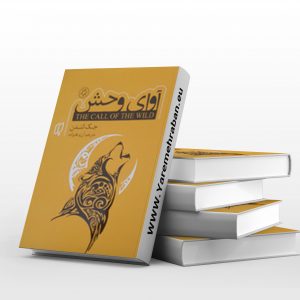


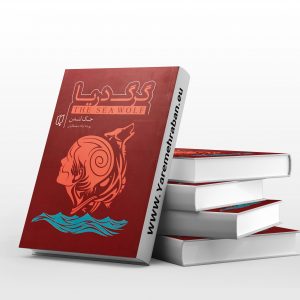
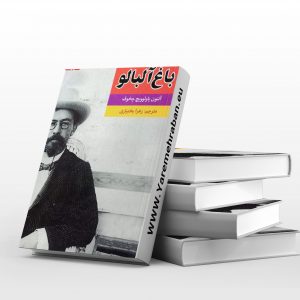
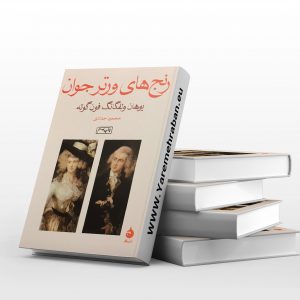

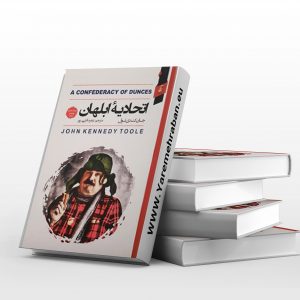

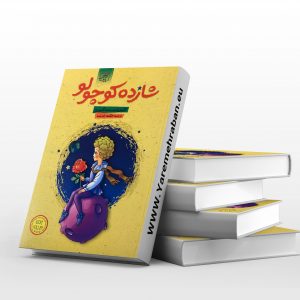

Reviews
There are no reviews yet.